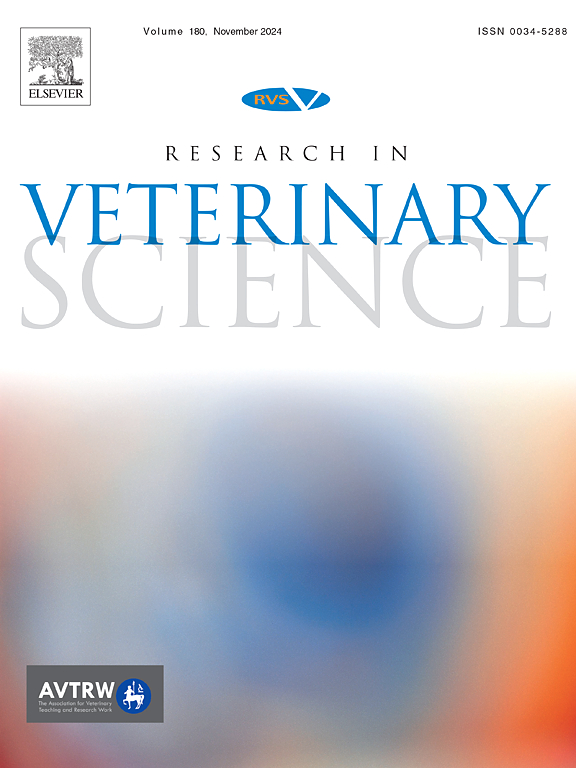Symmetric and asymmetric dimethylarginines in healthy and colic horses
IF 2.2
3区 农林科学
Q1 VETERINARY SCIENCES
引用次数: 0
Abstract
This study investigated the plasma concentrations of symmetric dimethylarginine (SDMA) and asymmetric dimethylarginine (ADMA) in healthy horses and in horses affected by colic in relation to the type of colic and systemic inflammation response syndrome (SIRS) status. Upon admission (T0), horses underwent a physical examination, and the SIRS status was assessed. The horses with colic were divided retrospectively based on the type of colic, SIRS status, treatment, and outcome. SDMA and ADMA levels were measured at T0 and then every 24 h at four time points (T1, T2, T3, T4). Differences between groups (healthy, non-strangulating intestinal obstruction, strangulating intestinal obstruction, SIRS-positive, and SIRS-negative) were analysed with the Kruskal-Wallis test. Changes within groups over time were assessed using Friedman's two-way analysis of variance by ranks. Generalized linear mixed models (GLMMs) were used to analyze SDMA and ADMA levels in colic horses. Diagnostic accuracy was assessed using receiver operating characteristic curves, cut-off values, area under the curve analysis, and 95 % confidence intervals. SDMA concentrations were significantly lower in healthy horses compared to colic patients across all sampling times. ADMA levels were significantly higher at T2 in strangulating colic and SIRS-positive horses compared to healthy horses. GLMM analysis revealed no differences in SDMA or ADMA concentrations based on colic type, SIRS status, treatment, or outcome. Neither SDMA nor ADMA appeared to offer clinical utility as biomarkers in distinguishing between strangulating and non-strangulating colic or SIRS-positive and negative horses.
求助全文
约1分钟内获得全文
求助全文
来源期刊

Research in veterinary science
农林科学-兽医学
CiteScore
4.40
自引率
4.20%
发文量
312
审稿时长
75 days
期刊介绍:
Research in Veterinary Science is an International multi-disciplinary journal publishing original articles, reviews and short communications of a high scientific and ethical standard in all aspects of veterinary and biomedical research.
The primary aim of the journal is to inform veterinary and biomedical scientists of significant advances in veterinary and related research through prompt publication and dissemination. Secondly, the journal aims to provide a general multi-disciplinary forum for discussion and debate of news and issues concerning veterinary science. Thirdly, to promote the dissemination of knowledge to a broader range of professions, globally.
High quality papers on all species of animals are considered, particularly those considered to be of high scientific importance and originality, and with interdisciplinary interest. The journal encourages papers providing results that have clear implications for understanding disease pathogenesis and for the development of control measures or treatments, as well as those dealing with a comparative biomedical approach, which represents a substantial improvement to animal and human health.
Studies without a robust scientific hypothesis or that are preliminary, or of weak originality, as well as negative results, are not appropriate for the journal. Furthermore, observational approaches, case studies or field reports lacking an advancement in general knowledge do not fall within the scope of the journal.
 求助内容:
求助内容: 应助结果提醒方式:
应助结果提醒方式:


